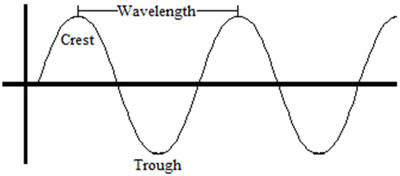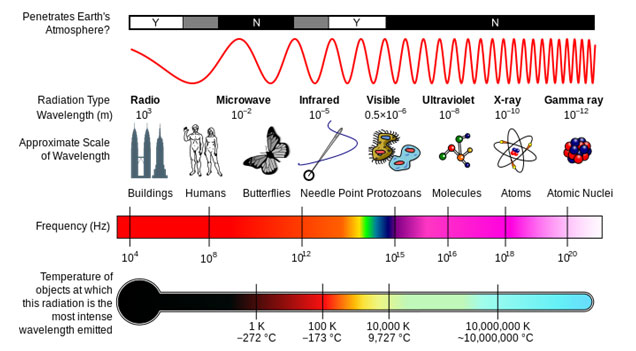
Adapted from: transverse, Mr. Clintberg's Studyphysics!

Adapted from: transverse, Mr. Clintberg's Studyphysics!
Waves and wave properties are used in many different ways. They are used by doctors and medical researchers, and in many areas of industry. The most common industrial applications of waves will be discussed in this session.
Remember that all of the waves on the electromagnetic spectrum are transverse waves, and these waves have multiple uses in medicine and also in research and industry. For example, many of the advanced imaging technologies that are used in medicine are also used in scientific research and industry. A factory may use X-rays to test for stress fractures in welding joints on an assembly line, or a scientist may use MRI imaging to analyze new treatments for muscles and joints. The precise imaging is based on very high frequency waves that make a very clear image of small objects.
There are times, however, where such precision is not necessary, like looking at storms crossing the country or trying to find oil deposits under the Earth's crust. For applications like these, scientists will often use radar. A radio emitter sends out low frequency radio waves and microwaves, and a detector picks up the reflections. The strength and frequency of the reflected waves can tell a meteorologist where a storm is, how fast it is moving, and even whether it is rain or snow that is falling.

Source: electromagnetic spectrum, NASA, Wikimedia Commons
Similar to the previous activity, in the activity below you will learn about the different uses of the transverse waves of the electromagnetic spectrum. However, this time you will look at uses in research and industry. Respond to the following in your notes.
![]() Click on each image and/or video to find out more about how each type of wave is used in industry.
Click on each image and/or video to find out more about how each type of wave is used in industry.
Sources for images and videos used in this section, as they appear, from top to bottom: